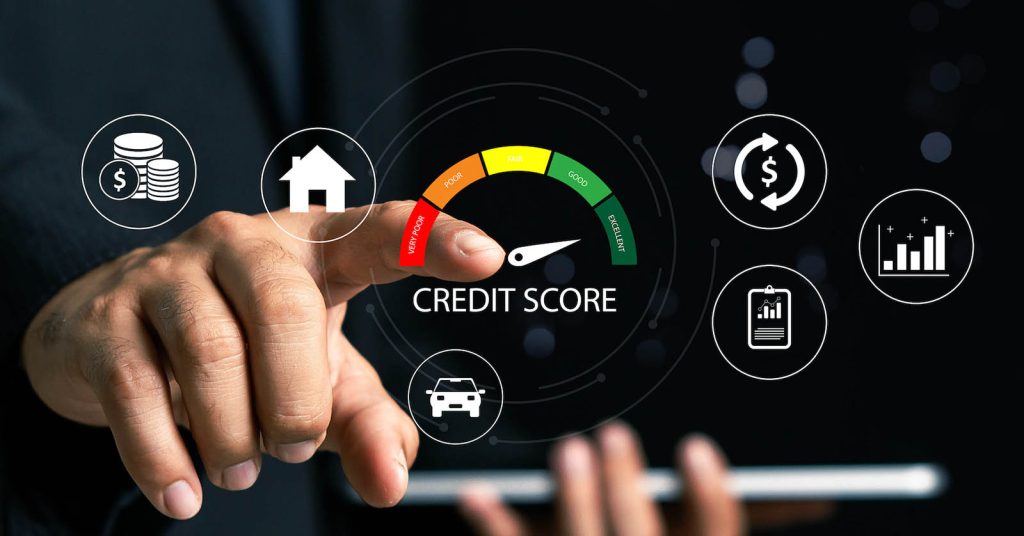Whether you just finished a bankruptcy, wrapped up a debt management plan, or settled old collections, the paperwork is only half the story. The next 90 days are when you start proving to future lenders that the way you handle credit has changed. That doesn’t mean applying for every card you see or obsessing over every point on your score. It means taking a calm, structured approach: clean up your credit file, stabilize your budget, and add new credit gradually and safely. Done well, your first three months after debt relief can set you up for steady progress instead of another cycle of overwhelm.
Key Takeaways
- Your first 90 days are about stability, not quick score jumps — focus on clean reports, on-time bills, and a realistic budget.
- You may need to wait for a discharge before opening new credit — especially in Chapter 13, taking on new debt usually requires court approval.
- Starter tools like secured cards and credit-builder loans can help — as long as they report to all three bureaus and you pay on time.
- Avoid quick-fix “credit repair” promises — you can rebuild credit yourself for free by following regulator-backed steps.
What changes after debt relief or bankruptcy
Debt relief is a broad term that can include bankruptcy, debt management plans through nonprofit credit counseling agencies, or settlement arrangements where creditors accept less than the full balance. Each path has different effects on your credit report and score, but they all share one thing: lenders now see evidence that your old debt became unmanageable. That can feel discouraging, yet regulators and major credit bureaus also emphasize that your scores can recover over time if your new behavior looks consistently responsible.
If you filed bankruptcy, the type matters. A Chapter 7 filing can stay on your credit reports for up to 10 years, while Chapter 13 generally remains for up to seven years, though the impact tends to fade as you add newer positive information. In a debt management plan, you may see accounts marked as “managed by credit counseling” or “paid through DMP,” and any late payments leading up to the plan will still show. Debt settlement can leave a mix of “settled for less than full balance” notations and closed accounts, plus potential score drops along the way.
In the very short term, your credit score may be lower than you hoped. That’s partly because serious negative events, like bankruptcy or settlements, weigh heavily in scoring formulas. It’s also because your pool of open, positive accounts may be smaller than before. But scoring systems are designed to be forward-looking, which means they react strongly to what you do next: paying every bill on time, keeping balances low, and avoiding new red flags like fresh collections or high utilization.
Legal rules also change what you’re allowed to do. During an active bankruptcy, especially Chapter 13, you generally cannot open new credit without court permission; trying to do so on your own can jeopardize your case. Once your case is discharged or your debt relief program is formally completed, those restrictions usually ease, but that doesn’t mean you should rush into new credit on day one. The smarter approach is to use the first 90 days to clean up and organize your financial picture before you apply for anything.
Finally, remember that good credit is not just about credit cards and scores. Lenders, landlords, and even some employers may consider your overall pattern: are you paying utility bills on time, keeping your checking account out of overdraft, and building even a modest emergency cushion? Regulators like the CFPB stress that rebuilding is a process with no magic shortcuts — steady, predictable behavior is far more powerful than any one trick.
Days 1–30: Clean up your credit file and stabilize cash flow
The first 30 days after debt relief are about getting your foundation right. That starts with knowing exactly what’s on your credit reports. Regulators and credit bureaus recommend pulling reports from all three nationwide agencies — Equifax, Experian, and TransUnion — and checking that discharged or resolved debts are reported accurately. Many consumers find lingering balances that should be zero, accounts still showing as “open” when they were closed, or late payments dated after a bankruptcy filing date that should be corrected.
As you review, make a list of any clear errors: wrong balances, duplicate collections, accounts that should be marked as discharged, or debts that don’t belong to you. You have the right under the Fair Credit Reporting Act to dispute inaccurate information with each bureau reporting it, and they generally must investigate and respond within about 30 days. Cleaning up errors early helps ensure that the new positive steps you take are not being dragged down by old mistakes that should already be behind you.
At the same time, take a hard look at your monthly budget. Debt relief may have reduced or eliminated certain payments, but your day-to-day bills — rent, food, utilities, transportation — are still there. The CFPB and FTC both emphasize that paying every bill on time, every time, is the foundation of rebuilding credit. That means you need a clear plan so essential bills fit comfortably within your income, with at least a small margin for surprises.
For many people, autopay is the simplest way to avoid new late payments. Setting up automatic payments for at least the minimum due on credit accounts, cell phones, and utilities can prevent human error from undoing your progress. If your cash flow is very tight, consider timing autopay dates to line up with paydays and leaving a small buffer in your checking account to avoid overdrafts. Even one new 30-day late payment can significantly slow your recovery after a bankruptcy or settlement.
This is also a good window to start building a tiny emergency fund — sometimes just a few hundred dollars at first. While savings alone won’t raise your credit score, having a cushion means you’re less likely to miss bills the next time an unexpected expense pops up. Many lawyers and counselors who help people through bankruptcy emphasize that post-relief success often depends on having even a small buffer between you and the next crisis.
By the end of the first month, your goals are simple: all three credit reports reviewed, obvious errors either corrected or disputed, a realistic written budget in place, and core bills set up on autopay or tracked closely. None of that will cause an overnight score jump, but it positions you to add the right kind of new credit in the next phase without stepping on a landmine you could have seen coming.
Days 31–60: Add safe starter credit (if you’re allowed to)
In the second month, your focus shifts from cleanup to carefully adding new positive data — if your situation allows it. If you are still in an active Chapter 13 case, you generally need court approval to incur new debt, so talk to your bankruptcy attorney before applying for anything. If your bankruptcy has been discharged or you’ve completed a debt management or settlement program, you typically have more flexibility, but restraint is still crucial.
Regulators highlight several common tools for rebuilding credit: secured credit cards, credit-builder loans, and sometimes small retail or gas cards. A secured card requires a cash deposit that usually becomes your credit limit; a credit-builder loan has you make payments into a locked savings account and then releases the money to you at the end, reporting each on-time payment along the way. Both are designed for people with limited or damaged credit and can work well if they report to all three major bureaus and you pay on time.
Before you apply, do some comparison shopping. Look for secured cards or credit-builder loans with clear terms, reasonable fees, and explicit statements that they report to Equifax, Experian, and TransUnion. Watch out for products that charge high upfront fees, monthly “membership” fees, or promise guaranteed approval without checking your finances — those are often red flags. The CFPB and FTC have repeatedly warned consumers about costly or deceptive credit repair and credit-building schemes that deliver little value.
Once you have one starter account, use it very lightly. Credit scoring models reward low utilization, which means keeping your balance far below your limit — ideally under about 30% of your available credit, and lower is often better. That might look like a small recurring subscription or one tank of gas each month, paid in full before the due date. You do not need to carry a balance and pay interest to build credit; responsible use and on-time payments are what count.
At the same time, avoid applying for multiple new accounts in a short period. Each application can trigger a hard inquiry, and a cluster of inquiries can signal risk to lenders and slightly lower your score. In your first 90 days, one well-chosen secured card or builder loan is usually more than enough. You can always reassess later as your score improves and your financial life stabilizes.
During this 31–60 day window, keep monitoring your credit reports and score periodically, but don’t get obsessed with daily changes. It can take one or two billing cycles for new accounts to appear and for your positive behavior to be reflected fully. What matters most is that there are no new late payments, no new collections, and no surprise accounts you didn’t open.
Days 61–90: Build lender-friendly habits and avoid quick fixes
By the third month, the basics should be in motion: cleaner reports, a functioning budget, and maybe one starter credit product that you’re using carefully. The focus now is on turning all of that into habits that lenders and scoring models will reward over the long run. In practice, that means predictable on-time payments, low balances, and a financial routine that does not depend on juggling due dates or using credit as a backup for every unexpected expense.
One of the most powerful habits is simply paying every bill on time, every time, for everything — not just credit cards, but also utilities, rent where it’s reported, and any remaining loans. CFPB guidance is clear that payment history is the single biggest factor in your credit profile and that rebuilding takes time with no legitimate shortcuts. The more consecutive on-time payments you stack up, the less weight old negatives will carry.
Another habit is watching your overall debt load. If you still have surviving loans or card balances after debt relief, work on a payoff plan that fits into your budget without requiring you to borrow again. Credit bureaus and regulators note that keeping credit card utilization low and avoiding new high-interest debt are key parts of rebuilding after bankruptcy or settlements. Where possible, use cash or debit for most everyday purchases and treat any new credit lines as tools, not lifelines.
It’s also wise to be skeptical of anyone selling “credit repair” as a quick cure. Government agencies have brought enforcement actions against credit repair firms that charged illegal upfront fees or made deceptive promises, stressing that you don’t need to pay anyone to dispute errors or rebuild your credit. Legitimate help is available from nonprofit credit counseling agencies and HUD-approved housing counselors who charge little or nothing and focus on your full financial picture, not just your score.
During this 61–90 day stretch, start thinking about your next six to twelve months, not just the next billing cycle. Do you have a plan to slowly increase your savings? Are there high-risk behaviors — like frequent overdrafts, gambling, or relying on buy-now-pay-later plans — that could undo your progress? A healthy credit profile is easier to build when your overall money habits are calm and predictable.
Finally, give yourself some credit — emotionally, not just on a score report. Coming through bankruptcy or a debt relief program is stressful, and rebuilding requires patience. Many people begin to see meaningful improvements in their scores within a year or two of filing, especially if they combine error-free reports, on-time payments, low utilization, and cautious use of new credit. The first 90 days are only the beginning, but they are the moment when you turn a legal fresh start into a practical one.
Frequently Asked Questions (FAQs)
When should I apply for new credit after bankruptcy or debt relief?
In many cases, it’s smart to wait until your bankruptcy is discharged or your debt relief program is officially completed, and your credit reports accurately reflect that status, before applying for new credit. During an active Chapter 13 case, taking on new debt usually requires the court’s permission and could jeopardize your plan if you do it without approval. After discharge, many experts suggest starting with one well-chosen secured card or credit-builder loan that reports to all three major bureaus, rather than applying for multiple accounts at once.
What’s the fastest way to rebuild my credit score in the first 90 days?
There’s no legitimate “fastest way” that skips the fundamentals. Regulators consistently stress that rebuilding credit starts with checking all three credit reports for errors, disputing inaccuracies, paying every bill on time, and keeping any new credit card balances low relative to your limit. Starter products like secured cards and credit-builder loans can add positive data, but they only help if you manage them carefully and avoid new late payments or heavy utilization.
Do I need to pay a credit repair company to rebuild my credit?
No. You can rebuild your credit yourself for free by following steps recommended by agencies like the CFPB and FTC: review your reports, dispute errors, pay on time, keep balances low, and add new credit gradually. Regulators have taken enforcement actions against some credit repair companies for charging illegal upfront fees and making deceptive promises, and they warn consumers to be cautious of anyone guaranteeing specific score increases. If you want guidance, a reputable nonprofit credit counseling agency or housing counselor is usually a safer and more affordable choice.
How long will it take my credit to recover after bankruptcy or debt settlement?
Recovery timelines vary, but many sources suggest that with consistent on-time payments, low utilization, and careful use of new credit, you may see noticeable improvement within one to two years, even though a bankruptcy can stay on your report for up to 7–10 years. Scores are dynamic and respond most strongly to recent behavior, so the positive habits you build in the first 90 days and beyond matter more than the fact that debt relief or bankruptcy appears in your history.
Sources
- Consumer Financial Protection Bureau — how to rebuild your credit and key rebuilding steps
- Consumer Financial Protection Bureau — tools like secured cards and credit-builder loans for rebuilding credit
- Federal Trade Commission — fixing your credit FAQs and cautions about credit repair services
- Experian — how to build credit after bankruptcy and suggested first steps
- TransUnion — tips to rebuild credit and how long improvement can take
- Equifax — rebuilding credit after bankruptcy and managing post-filing behavior
- Investopedia — steps to rebuild credit after bankruptcy and typical score impacts
- R. Banks Law Firm — cautions about new credit during active bankruptcy and post-discharge planning
- Consumer Financial Protection Bureau — what debt relief programs are and how they affect credit









